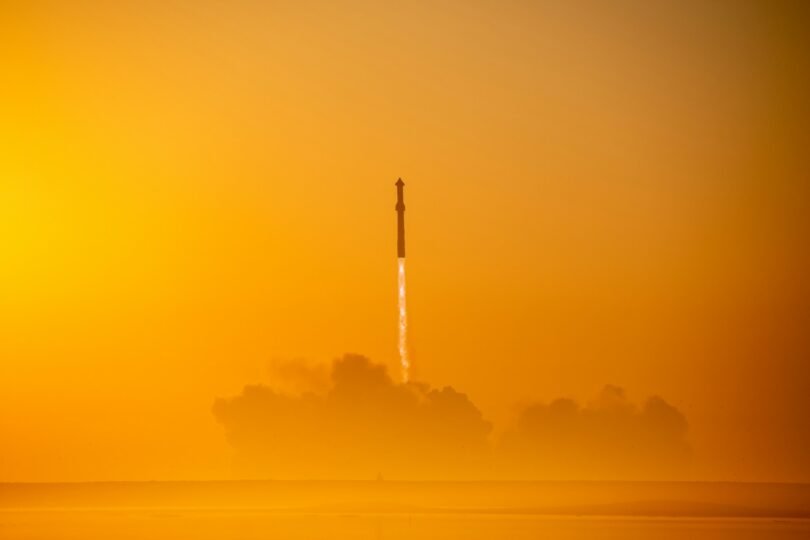Fire and Sky: The Human Fascination with Rockets
For millennia, human beings have looked to the sky with wonder. From ancient astronomers charting the movements of the planets to modern engineers building spacecraft capable of leaving Earth’s atmosphere, the dream of touching the stars has been one of humanity’s most enduring fascinations. At the heart of this quest lies one of the most remarkable technological creations ever devised: the rocket.
Rockets symbolize more than just machines of propulsion; they represent curiosity, ambition, and the will to transcend boundaries. They embody the intersection of fire—raw power, energy, and destruction—and sky—limitless potential, exploration, and the unknown. This article explores the history, science, culture, and future of rockets, and examines why humans remain so captivated by their fiery ascent into the heavens.
Ancient Beginnings: The Roots of Rocketry
The concept of the rocket is older than most people imagine. Long before the first astronauts, or even the first airplanes, early inventors were experimenting with controlled propulsion.
Early Chinese Fire Arrows
The first practical rockets are believed to have emerged in China around the 13th century, during the Song dynasty. Initially developed as military weapons, these “fire arrows” were simple tubes filled with gunpowder attached to arrows or spears. When ignited, they provided a burst of thrust that could carry the projectile farther than traditional methods.
These early rockets were rudimentary but revolutionary. They introduced the core concept of using expanding gases from combustion to generate motion—a principle that remains central to rocketry today.
Middle Eastern and European Innovations
After China, the idea spread along trade routes to the Middle East and later to Europe. By the 15th and 16th centuries, rockets were used in warfare by armies in India and the Ottoman Empire. European militaries, too, began experimenting with similar designs. Though these early rockets lacked precision and often caused more chaos than strategic impact, they marked a turning point in humanity’s understanding of directed energy.
The Scientific Revolution and the Birth of Modern Rocketry
The transition from crude fire arrows to the sophisticated rockets we know today required centuries of scientific progress. Key advances in physics, chemistry, and engineering laid the groundwork for modern space exploration.
Isaac Newton’s Laws of Motion
No figure is more crucial to rocketry than Sir Isaac Newton. His three laws of motion, articulated in the 17th century, provided the theoretical foundation for how rockets work. The third law—“for every action, there is an equal and opposite reaction”—is the cornerstone of rocket propulsion. When fuel combusts inside a rocket engine, gases are expelled at high speed in one direction, propelling the rocket in the opposite direction.
Konstantin Tsiolkovsky: The Visionary of Space Travel
In the late 19th and early 20th centuries, Russian scientist Konstantin Tsiolkovsky expanded on Newtonian mechanics to develop the first mathematical models for spaceflight. His “rocket equation” showed that liquid-fueled rockets were not only possible but essential for reaching outer space. Tsiolkovsky’s writings laid the intellectual groundwork for the Space Age.
Pioneers of Propulsion: Goddard and Oberth
American physicist Robert H. Goddard is often credited with building the first liquid-fueled rocket in 1926. Meanwhile, in Germany, Hermann Oberth explored similar technologies, inspiring a generation of engineers. These early pioneers transformed rocketry from a theoretical concept into an experimental science.
Rockets in War: From Weapon to Symbol
The 20th century saw rockets evolve dramatically, driven in large part by the pressures of war.
World War II and the V-2 Rocket
Perhaps the most infamous early rocket was the German V-2, developed during World War II by Wernher von Braun and his team. The V-2 was the first long-range guided ballistic missile, capable of traveling at supersonic speeds and delivering explosive warheads to distant targets. It caused devastating destruction, but its technological advancements would later pave the way for peaceful space exploration.
The Cold War Space Race
After the war, both the United States and the Soviet Union recruited German rocket scientists, including von Braun, to advance their own programs. Rockets became central to the Cold War, both as potential nuclear delivery systems and as tools for demonstrating national superiority. The launch of the Soviet satellite Sputnik in 1957 marked the beginning of the Space Race, igniting a new era of exploration.
Rockets as Instruments of Exploration
While rockets began as tools of war, they quickly became humanity’s ticket to the stars.
Breaking the Earthly Bonds
The first milestone was simply leaving Earth’s atmosphere. Yuri Gagarin’s historic flight in 1961 aboard Vostok 1 made him the first human in space, a feat achieved by Soviet rocketry. Eight years later, the Saturn V rocket carried Neil Armstrong, Buzz Aldrin, and Michael Collins to the Moon, achieving what many considered the pinnacle of human exploration.
Expanding Our Horizons
Since the Apollo missions, rockets have carried satellites, space probes, and telescopes far beyond our planet. The Voyager spacecraft, launched in 1977, used rocket technology to eventually leave our solar system. The Hubble Space Telescope, deployed by the Space Shuttle, has revolutionized our understanding of the universe.
Space for All: Commercial and Private Rockets
In recent decades, rockets have moved from being purely governmental endeavors to becoming part of a thriving private industry. Companies like SpaceX, Blue Origin, and Rocket Lab are developing reusable rockets, lowering the cost of access to space and opening new possibilities for tourism, research, and industry.
The Cultural Impact of Rockets
Rockets are not just machines; they are cultural icons. They inspire art, literature, cinema, and even fashion.
Rockets in Popular Imagination
From early science fiction like Jules Verne’s “From the Earth to the Moon” to modern blockbusters like “Interstellar” and “The Martian,” rockets have long represented humanity’s longing to explore. They appear in children’s toys, national emblems, and even advertising—symbols of progress, daring, and the future.
The Rocket as a Symbol of Power and Progress
Nations use rockets to project influence. A successful launch demonstrates technological prowess, scientific achievement, and economic strength. Space programs often inspire national pride and unite people around a common dream.
The Science Behind the Fire
To understand why rockets fascinate us, one must also grasp the raw power they unleash.
How Rockets Work
Rockets operate on the principle of expelling mass to generate thrust. Unlike airplanes, which rely on air for lift and propulsion, rockets carry both fuel and oxidizer, allowing them to function in the vacuum of space.
Types of Rockets
-
Solid-fueled rockets: Simple and reliable, used in early military and space applications.
-
Liquid-fueled rockets: Allow for more precise control and greater efficiency.
-
Hybrid rockets: Combine aspects of both for specialized uses.
Emerging technologies like ion thrusters and nuclear propulsion promise even more efficient ways to traverse the cosmos.
Read More: Why Rockets Are Still Our Ticket to Space?
The Psychological Appeal: Why Do We Love Rockets?
Beyond their utility, rockets touch something primal in the human psyche.
Fire: The Oldest Human Obsession
The fiery exhaust of a rocket harkens back to one of humanity’s earliest technological triumphs—fire itself. Watching a rocket launch is a visceral experience: the roar, the heat, the ground trembling beneath your feet. It is as much a ritual as a technological feat.
Sky: The Ultimate Mystery
The sky has always represented mystery and aspiration. Rockets make tangible the dream of flight, of leaving behind the known world and venturing into the unknown. They give us the sense that we can transcend our limitations.
Challenges and Controversies
The fascination with rockets is not without its darker side.
Environmental Impact
Rocket launches produce emissions that can damage the atmosphere and contribute to climate change. The growing number of launches has also increased the risk of space debris, which poses hazards to satellites and future missions.
Militarization of Space
While rockets have enabled peaceful exploration, they are also integral to modern warfare. Ballistic missiles and anti-satellite weapons raise concerns about the militarization of space.
Economic Barriers
Despite progress in reducing launch costs, access to space remains expensive. Many nations and communities are excluded from the benefits of space exploration.
The Future of Rockets: Where Fire Meets the Stars
Human fascination with rockets shows no sign of waning. The coming decades promise remarkable developments.
Reusable Rockets
Companies like SpaceX have pioneered the reusability of rocket boosters, making launches more economical. This innovation could make space travel as routine as air travel.
Moon Bases and Mars Missions
NASA’s Artemis program, along with international and private efforts, aims to establish a sustained human presence on the Moon. Mars colonization, once a science fiction dream, is now a serious engineering challenge.
Beyond Chemical Propulsion
Future rockets may not rely on chemical fuel at all. Nuclear thermal propulsion, solar sails, and even antimatter drives are being explored as potential methods for interstellar travel.
Rockets as a Mirror of Humanity
Rockets are more than machines—they are a reflection of our species.
Our Desire to Explore
Every rocket launch is a declaration: that we are not content to remain where we are, that curiosity is a fundamental part of being human.
Our Capacity for Destruction and Creation
Rockets carry both bombs and telescopes, satellites for communication and weapons of war. They remind us that technology is a tool, and it is up to us to decide its purpose.
Our Collective Imagination
From the first fire arrows to the massive engines of today, rockets are built from dreams as much as metal and fuel. They are monuments to imagination, collaboration, and the will to defy gravity.
Conclusion:
“Fire and Sky” is not just a poetic description of a rocket launch; it is a metaphor for the human condition. Fire is our power, our energy, our risk. The sky is our dream, our aspiration, our destiny. When we watch a rocket soar, we see a reflection of ourselves—bold, flawed, curious, and ever reaching.
The fascination with rockets is unlikely to fade. As long as there are new horizons to explore, new questions to ask, and new generations to inspire, rockets will continue to ignite both the heavens and our imaginations.







